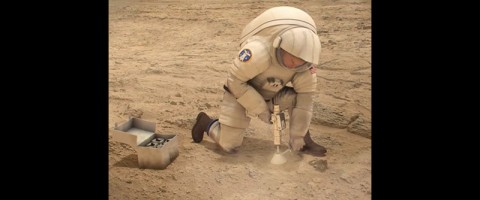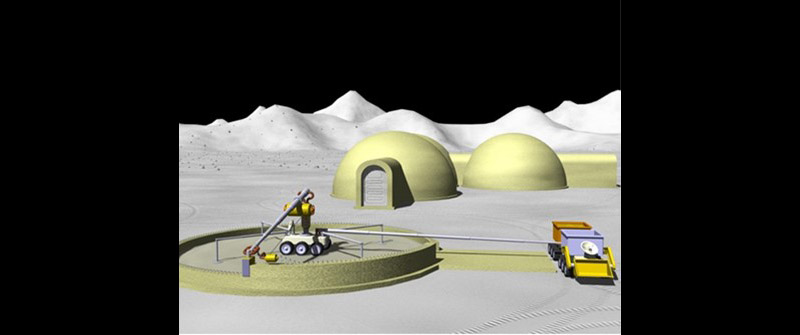Written by Joshua Buck
Public Affairs Officer, NASA Headquarters
 Washington, D.C. – You wake up to the bright sun beating through the self-healing micrometeoroid-resistant fabric windows. The storm is over. Donning a spacesuit, you head out through the airlock to sweep the dust off the solar arrays from last night’s storm.
Washington, D.C. – You wake up to the bright sun beating through the self-healing micrometeoroid-resistant fabric windows. The storm is over. Donning a spacesuit, you head out through the airlock to sweep the dust off the solar arrays from last night’s storm.
Although this situation may seem like just an excerpt out of a book or movie, space travel to Mars and the advanced technologies needed may be closer than you think. NASA is on a journey to Mars and is turning science fiction into science fact. Every day, NASA is working to develop new technology and find innovative solutions to challenges facing aeronautics, space exploration, and the greater scientific community.

The Additive Construction with Mobile Emplacement (ACME) project focuses on the development of technologies to support automated development of planetary surface structures, including roads, berms, radiation, blast and micro-meteoroid protection, and pressurized and un-pressurized structures, using materials found on the planet, known as in-situ materials. Technology like these will minimize the number of crew-hours required to operate and maintain a habitat on long-duration missions.
Innovative light-weight airlock technologies are required on any deep space or surface platform hosting extra-vehicular activity (EVA), or spacewalking. Airlocks typically consist of two chambers. The astronauts enter the first chamber, where the spacesuits are stored. Once the astronauts are safely inside of their spacesuits, they move to the second chamber, or crew lock. The crew lock chamber is sealed from the rest of the vehicle or habitat and then depressurized. At that point, the external hatch is unlocked for exit to space or the surface.

Mars surface operations will last longer, require greater mobility, and occur under a wider range of conditions than experienced in the past. Innovative spacesuit designs will be needed to meet these new, more demanding requirements.
Portable Life Support System (PLSS) technologies are under development which, for the first time, will allow continuous control of suit pressure, resulting in higher levels of flexibility and safety. Protocols to prevent the bends, similar to those experienced by scuba divers, could be performed within the suit, allowing astronauts to exit more quickly and providing more time for exploration than for preparation.
These are just a few of the technologies for the journey to Mars described in NASA’s new online Technology Portfolio system, TechPort. TechPort is a comprehensive resource created by NASA to enable the public to gain insight into the latest technologies under development by NASA. Users can search our database and print out detailed reports describing the technology and progress in developing it.
NASA is focused on the Journey to Mars — one that began more than four decades ago. Will you join the journey?
For more information about new NASA technology development, visit:
For more information about the Office of the Chief Technologist’s Strategic Integration Office, visit:



